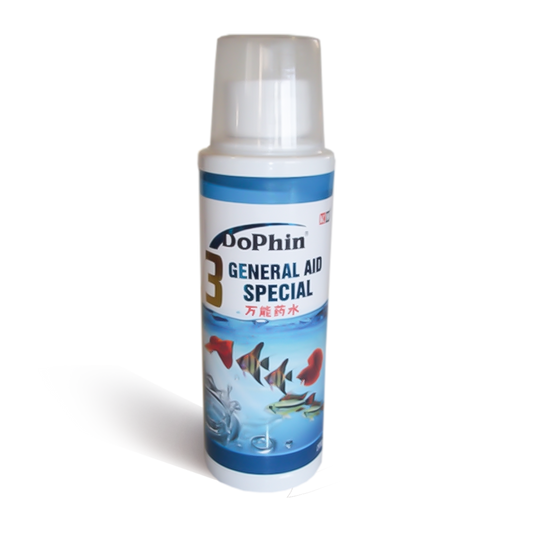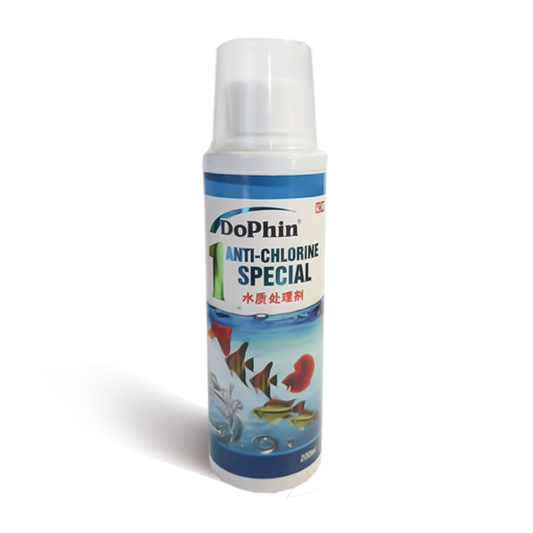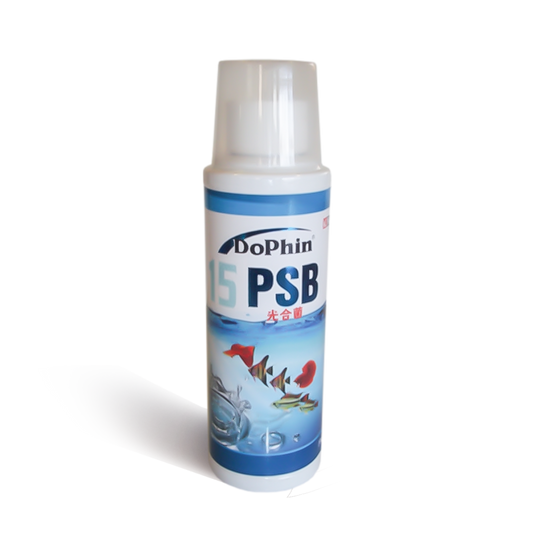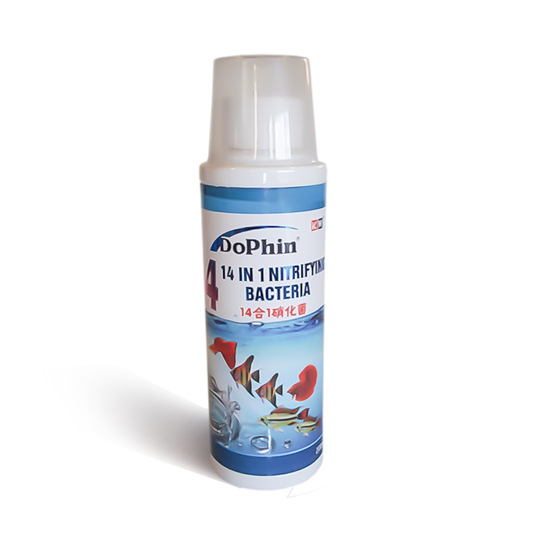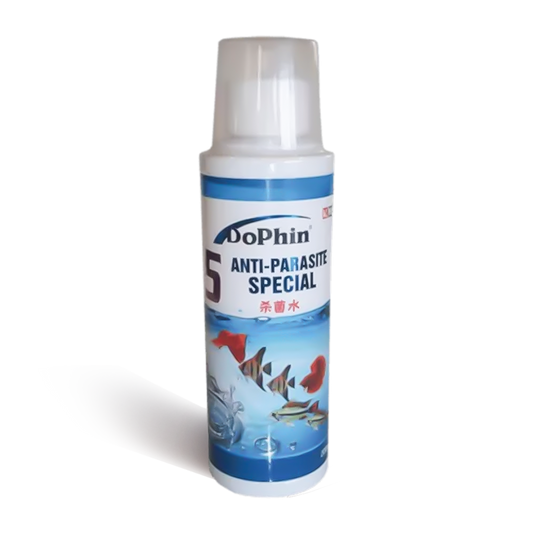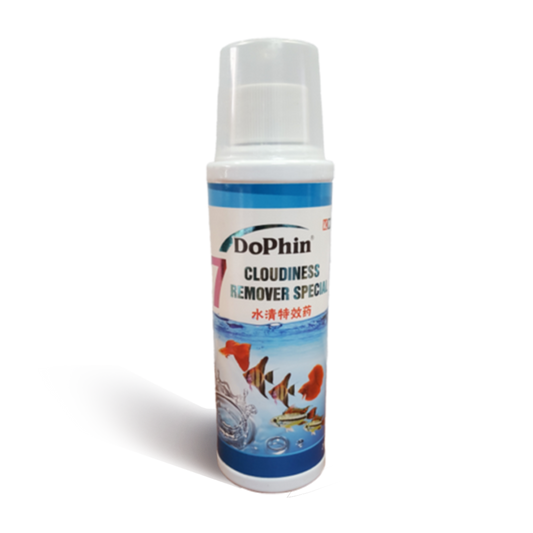When to use DoPhin® #5 for your Fish

Keeping Your Fish Healthy: Spotting Parasites and Using DoPhin #5 Effectively
Our finned friends bring us joy and serenity, but keeping them healthy can sometimes feel like a challenge. Parasites are a common threat to aquarium fish, and quick action is key to preventing outbreaks. This blog will help you identify some of the most common parasites - Chilodonella, Costia, Ichthyophthirius (Ich), skin and gill flukes - and determine when to use DoPhin #5 for effective treatment.
The Pesky Parasites:
- Chilodonella and Costia: These microscopic protozoa attach to the gills and skin of fish, feeding on their tissues. Signs of infection include flashing (rapid rubbing against objects), clamped fins, labored breathing, and excessive slime production.
- Ichthyophthirius (Ich): This single-celled parasite is easily recognizable by the white spots it forms on fish bodies and fins. Fish may also flash and breathe rapidly.
- Skin and Gill Flukes: These flatworms burrow into the skin and gills of fish, causing irritation and secondary infections. Look for flashing, clamped fins, and labored breathing. In severe cases, fish may have popeye (bulging eyes).
Early Detection is Key:
Regularly monitoring your fish is the best way to spot parasites early. Observe their behavior and appearance during feeding times. Here are some warning signs:
- Flashing (rapid rubbing against objects)
- Clamped fins
- Labored breathing
- Excessive slime production
- White spots on the body and fins
- Popeye (bulging eyes)
Taking Action with DoPhin #5:
DoPhin #5 is a broad-spectrum treatment designed to combat parasites with a free-swimming stage, including those mentioned above. However, it's important to use it correctly:
- Diagnose the parasite: While DoPhin #5 is effective against various parasites, pinpoint the culprit for targeted treatment. Online resources and consultation with a veterinarian can help.
- Follow the instructions: Do not exceed the recommended dosage for your aquarium size. Overdosing can harm your fish and disrupt the biological balance of your tank.
- Partial water changes: Maintain good water quality during treatment by performing regular partial water changes (around 25% every few days).
- Monitor your fish: Closely observe your fish during treatment. If their condition worsens, discontinue use and consult a veterinarian.
Remember:
- Prevention is key: Maintain good water quality through regular water changes and proper filtration. This reduces the risk of parasite outbreaks.
- Quarantine new fish: Before introducing new fish to your main tank, quarantine them for several weeks to prevent the spread of parasites or diseases.
- Treat the whole tank: Parasites can reproduce quickly. Treating the entire tank ensures you eliminate all stages of the parasite lifecycle.
By keeping a watchful eye on your fish and acting swiftly when parasites appear, you can ensure the health and well-being of your finned companions. Remember, DoPhin #5 can be a valuable tool in your aquarium maintenance arsenal, but proper diagnosis and responsible use are crucial for successful treatment.
Happy Fishkeeping!



DoPhin® #4
-
DoPhin® #3 Aquarium All-in-One Care: Treat Multiple Fish Diseases Instantly 200ml
Vendor:DoPhinRegular price R 79.00Regular priceR 0.00Sale price R 79.00 -
DoPhin® #1 Anti-chlorine: Instantly Neutralize Chlorine & Heavy Metals 200ml
Vendor:DoPhinRegular price R 71.00Regular priceR 0.00Sale price R 71.00 -
DoPhin® #15 PSB Advanced Bio-Clean Formula for Crystal Clear Aquariums 200ml
Vendor:DoPhinRegular price R 128.00Regular priceR 0.00Sale price R 128.00 -
DoPhin® #14 -in-1 Aquarium Bacteria Booster & Conditioner 200ml
Vendor:DoPhinRegular price R 128.00Regular priceR 0.00Sale price R 128.00 -
DoPhin® #5 Aquarium Anti-Parasite Treatment - Broad-Spectrum Formula 200ml
Vendor:DoPhinRegular price R 143.00Regular priceR 0.00Sale price R 143.00 -
DoPhin® #7 Crystal Clear Aquarium Cloudiness Remover Solution #7 200ml
Vendor:DoPhinRegular price R 143.00Regular priceR 0.00Sale price R 143.00

